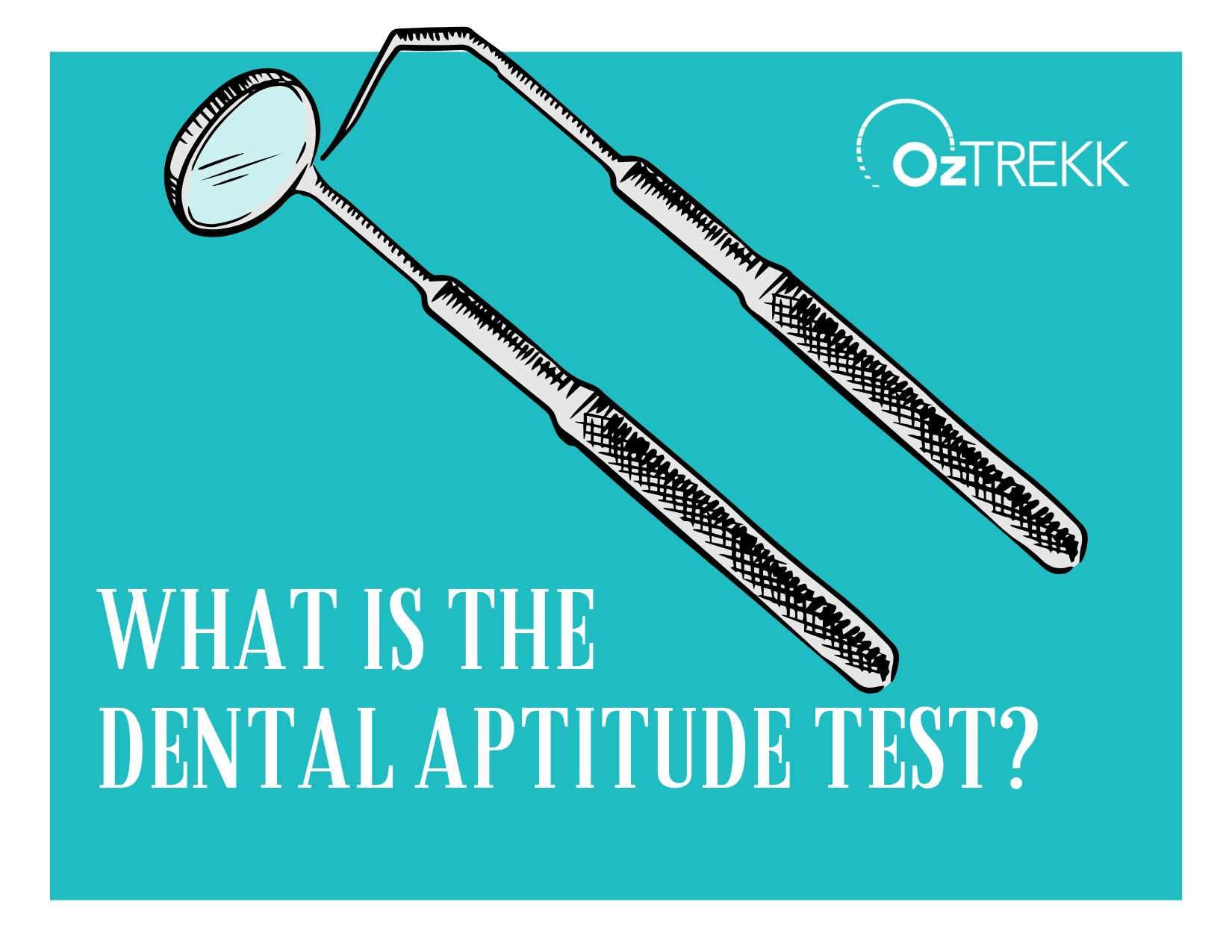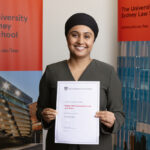
What is the DAT (Dental Aptitude Test)?
Are you thinking of applying to an Australian dental school?
If you said, yes, you’ll probably be writing the Canadian DAT as part of the admissions process.
The Dental Aptitude Test (DAT) is conducted by the Canadian Dental Association (CDA) to help students assess their aptitude for a career in dentistry and to assist dental schools in selecting first-year students.

The DAT is available throughout the year at Prometric professional test centres across Canada. Tests will be administered and scored via computer.
DAT Registration Process
1. Read the DAT Candidate Guide.
2. Register on CDA website, marking OzTREKK as a receiver of your DAT score report.
3. CDA will email you with your eligibility ID and a 6-month testing window.
4. With your eligibility ID, book a test via the Prometric website.
5. When you arrive at the Prometric test centre to write the DAT, Prometric will verify that your ID exactly matches the info you submitted.
6. Take the test.
7. CDA will email you when your score is available. Scores will be available in approximately four weeks after your test date.
8. CDA will send your score report to OzTREKK.
When Should I Register for the DAT?
We recommend registering as soon as possible. Unlike Canada, where the school year generally begins in September, Australian dental programs begin in January or February each year.
We encourage our students to begin the application process a year in advance. After your registration is complete, you’ll be eligible to write the DAT within a 6-month testing window. It can take up to four weeks for your scores to be made available. The CDA recommends registering well in advance of when you intend to take the DAT, so you are able to make a testing appointment that is convenient for you.
At the Test Centre
Arrive a minimum of 30 minutes in advance of your test time. You must present two pieces of identification that bear your signature. One of these must be government-issued and must include your photo. Only the government-issued identification listed below will be accepted for photo ID:
- Passport
- Driver’s license
- Citizenship card
- Provincial ID card
- Certificate of Indian Status
Keep in mind that you’ll be asked to store all your belongings (including purses, wallets, phones, watches, etc.) in a storage locker.
What is on the DAT?
The Canadian Dental Aptitude Test has two main parts: the computer-based “written” test and the Manual Dexterity Test. The Manual Dexterity Test, which involves carving a piece of soap according to exact specifications, is currently suspended because of COVID-19 restrictions and related logistical challenges. CDA is working toward the resolution of those challenges and will reintroduce the Manual Dexterity Test as soon as possible. Monitor www.cda-adc.ca/dat for updates.
The tests are administered over a half day and include the following tests:
1. Manual Dexterity Test – (N/A for Australian or New Zealand dental school applicants)
Please note, the University of Melbourne, the University of Sydney, and the University of Western Australia do not require this section to be completed to be considered for entry.
2. Survey of Natural Sciences – (70 items)
Biology (40 items) & General Chemistry (30 items)
3. Perceptual Ability – (90 items)
The Perceptual Ability Test comprises 6 subtests: apertures, view recognition, angle discrimination, paper folding, cube counting, and 3D form development.
4. Reading Comprehension (English DAT only) – (50 items)
Consists of 3 reading passages. Ability to read, organize, analyze and remember new information in dental and basic sciences. Ability to comprehend thoroughly when studying scientific information. Reading materials are typical of materials encountered in the first year of dental school and require no prior knowledge of the topic other than a basic undergraduate preparation in science.
How Many Times Can I Write the DAT?
You’re allowed to sit the DAT an unlimited number of times, but there are some requirements for multiple DAT attempts:
- The DAT may only be written 3 times within a 12-month period.
- After three attempts, you must provide proof of your continued application to dental school, and may only attempt the DAT one time per twelve-month period.
Only the results of your most recent attempt, (plus the total number of attempts), will be reported on your official DAT transcript.
For full details about the DAT, please visit Canadian Dental Association.
Australian Dental Schools Requiring the DAT
- University of Melbourne Dental School
- University of Sydney Dental School
- University of Western Australia Dental School
Dental Schools Without DAT Requirement
- Charles Sturt University Dental School
- Griffith University Dental School
- James Cook University Dental School
- University of Otago Dental School
- University of Queensland Dental School
- La Trobe University Dental School
- University of Western Australia Dental School (Undergraduate)
Get the student perspective—read an OzTREKK student’s DAT prep tips!
*



































Ask A Question
Ask us about your program of interest, or if you have a question about our services.
CONTACT US TODAY